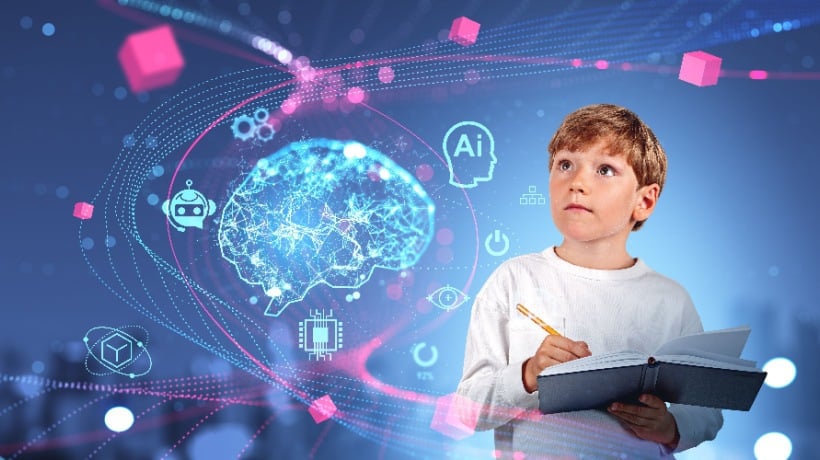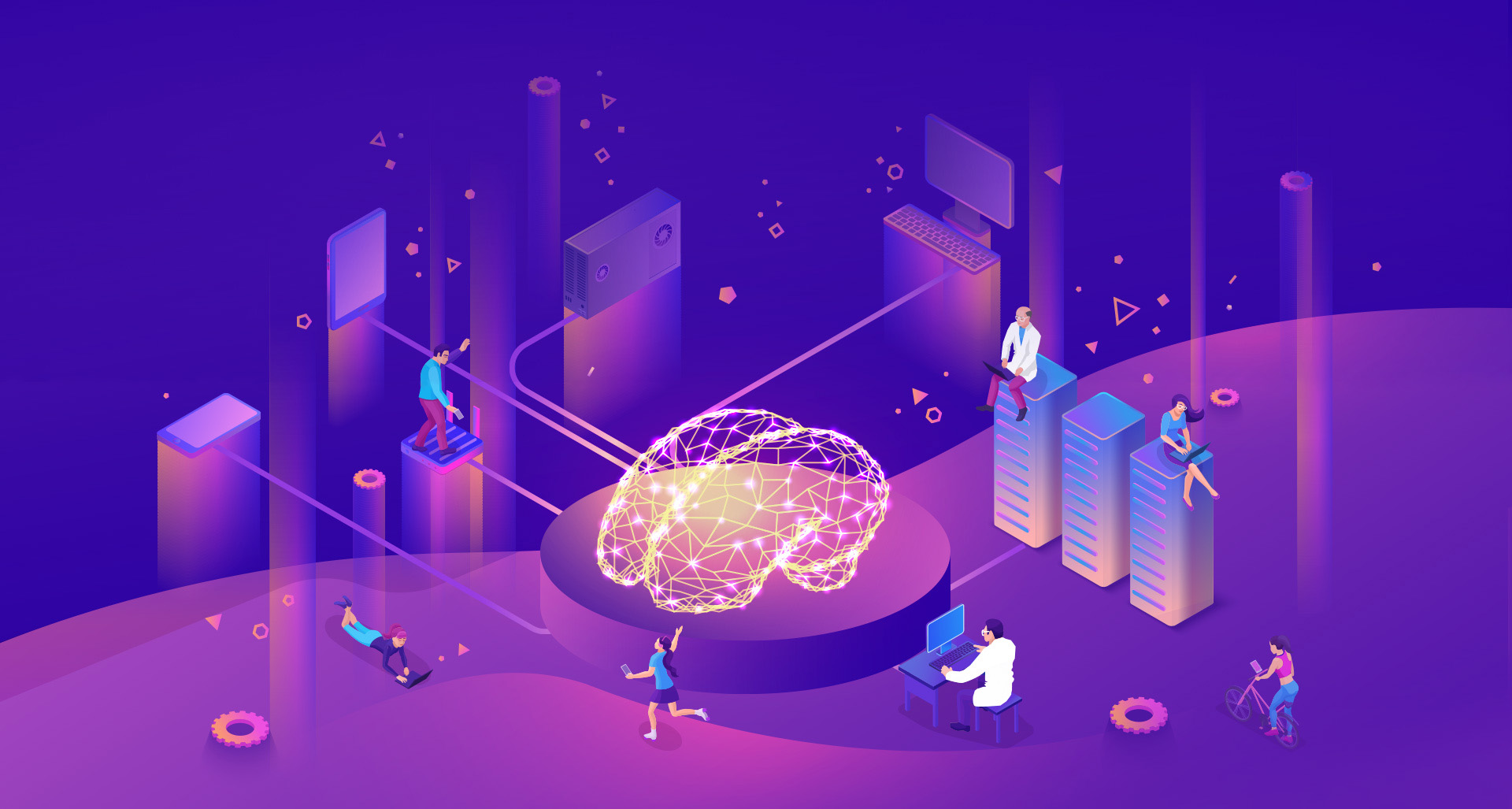The Future Of AI In eLearning Systems

Artificial Intelligence (AI) is reshaping industries worldwide, and education is no exception. With the rise of eLearning systems, AI has become a powerful force for personalized learning, enhancing student engagement, optimizing instructional design, and automating administrative tasks. As AI continues to evolve, its role in eLearning is poised to expand, providing unprecedented opportunities for learners, educators, and institutions alike. This article will explore the current applications of AI in eLearning, the benefits and challenges, and future trends shaping the future of AI-driven education.
The Evolution of AI in Education
AI has come a long way in education since the early adaptive learning platforms. In the past, eLearning systems focused primarily on providing content, while learners followed a static curriculum. Today, AI introduces dynamic, personalized experiences by analyzing learners’ behavior, preferences, and performance to offer tailored content and support.
The progression of AI technology has allowed it to become an integral part of Learning Management Systems (LMS) and virtual learning environments. With advanced algorithms and machine learning capabilities, AI-driven platforms can now identify gaps in learners’ knowledge, predict future performance, and provide recommendations that optimize the learning process.
Applications of AI in eLearning Systems
AIs implementation in eLearning spans multiple dimensions, from personalization to automation. Below are some of the key applications:
1. Personalized Learning
AI-powered eLearning platforms can analyze data from students’ interactions with the system, including their strengths, weaknesses, and learning preferences. This data-driven approach allows AI to create personalized learning paths for each student, recommending specific resources, adjusting content difficulty, and pacing lessons based on individual needs. This customization fosters engagement, improves learning outcomes, and helps students achieve mastery more efficiently.
For instance, platforms like Coursera and Udemy use AI algorithms to recommend courses tailored to a learner’s past behavior and interests. Adaptive learning systems like DreamBox and Knewton personalize math instruction by adapting to the learner’s skill level in real-time, ensuring they receive appropriate challenges and support.
2. Intelligent Tutoring Systems (ITS)
AI-driven Intelligent Tutoring Systems offer one-on-one guidance to learners by mimicking human tutoring. These systems use natural language processing (NLP) to understand learners’ questions and provide explanations or hints in a conversational manner. ITS also tracks a learner’s progress and adjusts the instruction accordingly, offering additional explanations where necessary and advancing the material when the learner is ready.
An example of ITS in action is Carnegie Learning’s MATHia, which provides AI-driven personalized math instruction. MATHia can assess learners’ understanding in real-time, delivering feedback and adapting problems to suit their comprehension level.
3. Automated Assessments and Feedback
AI can automate grading and provide instant feedback to learners, reducing the burden on educators while promoting continuous learning. Instead of waiting days for an instructor’s response, learners receive immediate, detailed feedback on assignments and assessments, which allows them to correct mistakes and improve faster.
AI-based grading systems like Gradescope utilize machine learning algorithms to grade exams, homework, and programming assignments. The system provides detailed feedback, often identifying patterns in students’ mistakes, which can be used to guide further instruction.
4. Natural Language Processing (NLP) and AI Chatbots
NLP plays a crucial role in enhancing eLearning systems through AI-powered chatbots that facilitate communication between learners and educators. Chatbots can assist students in finding resources, answering questions, and providing guidance, even outside of regular classroom hours.
For example, platforms like Duolingo use NLP-powered chatbots to simulate real conversations, helping learners practice languages in a more interactive and engaging manner. Chatbots can answer questions, offer encouragement, and provide explanations on demand, making learning more accessible and less dependent on direct human interaction.
5. Learning Analytics and Predictive Insights
AI can process vast amounts of data collected from eLearning systems to generate insights into learners’ behavior, performance, and engagement levels. Learning analytics can help identify at-risk students, allowing instructors to intervene early and offer additional support before the learner falls too far behind.
Through predictive analysis, AI can forecast students’ future performance based on historical data, allowing educators to take proactive measures. For instance, tools like Brightspace Insights provide visualizations and reports that help institutions track learners’ progress and predict their success or potential challenges.
6. Gamification and Adaptive Learning
AI can enhance eLearning by incorporating gamified elements such as points, badges, and leaderboards, encouraging learners to stay engaged. Adaptive learning, powered by AI, adjusts the difficulty and pace of gamified learning activities based on a learner’s performance, ensuring a balance between challenge and motivation.
For example, platforms like Smart Sparrow combine AI with gamification to deliver adaptive learning experiences. By adjusting course material based on real-time performance, AI ensures learners stay in the “zone of proximal development,” where they are sufficiently challenged but not overwhelmed.
7. Automating Administrative Tasks
Beyond instruction, AI helps streamline administrative processes in eLearning systems, such as managing course schedules, tracking attendance, and sending reminders to learners. AI can assist with routine tasks, freeing up time for educators to focus on teaching and course development.
For example, AI-powered tools like AdmitHub handle student inquiries, send personalized notifications, and assist with registration processes. By automating these administrative functions, institutions can enhance operational efficiency and improve the overall learner experience.
Benefits of AI in eLearning Systems
The integration of AI in eLearning brings a wide range of benefits for learners, educators, and institutions. Here are some of the key advantages:
1. Enhanced Learner Engagement
AI-powered eLearning systems keep learners engaged through personalized content, interactive experiences, and real-time feedback. By catering to individual preferences and adapting to learners’ progress, AI helps maintain motivation and fosters deeper learning.
2. Scalability
AI enables eLearning platforms to scale easily. Intelligent systems can handle large volumes of learners simultaneously, providing personalized experiences and timely feedback regardless of class size. This scalability is particularly useful for Massive Open Online Courses (MOOCs), where thousands of students may be enrolled in a single course.
3. Improved Learning Outcomes
By personalizing learning experiences and offering targeted support, AI helps learners achieve better outcomes. Adaptive learning paths ensure students focus on the areas where they need the most improvement, while real-time feedback helps them stay on track.
4. Accessibility
AI-driven eLearning systems make education more accessible by offering on-demand support through chatbots, tutoring systems, and adaptive platforms. Learners can access resources anytime, from anywhere, making education more flexible and inclusive for those with different learning styles or needs.
5. Cost Efficiency
Automation of administrative tasks and grading reduces operational costs for educational institutions. AI-driven systems can manage tasks that would typically require significant human intervention, allowing institutions to allocate resources more effectively.
Challenges of AI in eLearning Systems
Despite the numerous benefits, AI in eLearning also presents challenges that must be addressed to fully realize its potential.
1. Data Privacy and Security
AI systems rely heavily on collecting and analyzing student data, raising concerns about privacy and security. Institutions must implement robust data protection measures to safeguard sensitive information and ensure compliance with regulations such as GDPR.
2. Bias in Algorithms
AI algorithms can inherit biases from the data they are trained on, potentially leading to unfair treatment of certain groups of learners. It is essential for developers and educators to regularly audit AI systems and ensure that their algorithms promote equity and inclusivity.
3. Teacher and Student Adaptation
The implementation of AI in eLearning requires both educators and students to adapt to new technologies. Teachers must be trained to effectively use AI tools in their instruction, while students must become comfortable with AI-driven learning environments. The transition can be challenging, especially for individuals who are less tech-savvy.
4. Over-Reliance on Technology
As AI becomes more integrated into eLearning, there is a risk of over-reliance on technology, potentially diminishing the role of human instructors. While AI can automate many aspects of learning, human educators remain essential for fostering critical thinking, creativity, and emotional intelligence—areas where AI currently falls short.
The Future of AI in eLearning Systems
Looking ahead, AI’s role in eLearning will likely become even more prominent, with advancements in deep learning, natural language processing, and robotics shaping the future of education. Below are some key trends to watch for:
1. Virtual Reality (VR) and Augmented Reality (AR)
AI-powered VR and AR technologies will revolutionize eLearning by creating immersive learning environments that simulate real-world experiences. From virtual laboratories to historical reenactments, these technologies will offer hands-on learning opportunities that enhance comprehension and retention.
2. Emotional AI
The development of emotional AI, capable of detecting and responding to learners’ emotions, will improve eLearning experiences by fostering empathy and emotional intelligence. Emotionally aware AI systems will be able to adapt their responses based on learners’ emotional states, providing encouragement and support when needed.
3. Lifelong Learning
AI will play a pivotal role in promoting lifelong learning by enabling continuous, self-directed education. As careers evolve and industries change, AI-powered eLearning systems will help individuals acquire new skills and knowledge throughout their lives.
4. AI-Powered Collaboration Tools
Collaboration is a key aspect of education, and AI will enhance online collaboration tools by facilitating group work, automating group dynamics analysis, and ensuring more productive interactions. AI-driven platforms will be able to form optimal study groups, suggest collaborative projects, and even mediate discussions to promote better communication among learners.
Conclusion
In conclusion, the integration of AI into eLearning systems marks a significant milestone in the evolution of education. It is essential that educators, institutions, and developers work collaboratively to ensure that these technologies are used ethically, equitably, and in ways that truly enhance the learning process. By leveraging AI’s potential while addressing its challenges, the future of eLearning can become more dynamic, inclusive, and effective for learners worldwide.
Bestarion Website Admin


